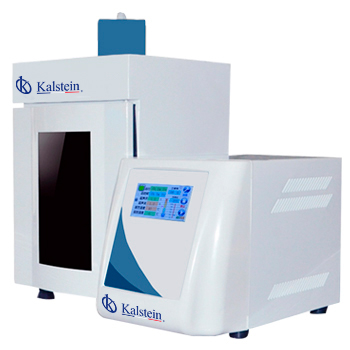Homogenizer technology for use in biochemical laboratories has experienced a breakthrough in the last decade. This advanced equipment is used to create homogeneous solutions in samples at the molecular level. Beyond their classical applications in biochemistry, homogenizers have many other uses for scientific preparation in a biochemistry laboratory. Some of the configurations, applications and benefits of using homogenizers in the biochemistry laboratory are described below.
In Kalstein as a manufacturing company we guarantee the use of the most resistant materials that meet the quality standards to ensure the efficiency and effectiveness of the results in the use of Kalstein homogenizers, in addition to offering you the best price, advising you during your purchase, meet our HERE.
Homogenizer configurations for biochemistry laboratories
Biochemistry laboratory homogenizers come in many configurations, both manual and powered. Mechanical or pneumatic drive ones are controlled by push buttons or pushbuttons, while manual ones are operated with the pressure of a hand. The selection depends on the intended use and the working sample. For example, a pneumatic homogenizer is used for larger or more difficult to homogenize samples. There are also homogenizers with size adjustment to select different processing sizes for different applications.
Modern homogenizers are a valuable tool for sample preparation in the biochemistry laboratory. They provide efficient homogenization, not only for sample extraction, but also for emulsion preparation. The homogenizers are versatile and can be adjusted to suit multiple laboratory applications. Users can take advantage of the multiple uses of homogenizers to obtain optimal results in their laboratory tests and experiments.
Application of homogenizers in the biochemistry laboratory
Homogenizers can be used to create a homogeneous suspension from the laboratory sample. This is achieved by the repetitive shearing and grinding motions, caused by the homogenizer. In biochemistry laboratories, this is applied to treat samples such as animal or plant tissues, fungi and bacteria. Homogenizers are also used for the preparation of cell extracts or for the release of nucleic acids from the sample.
Homogenizers are also used for fining and homogenization of tissues, either to create suspensions or emulsions. They can be used to suspend animal and plant tissues in liquids, prepare emulsions for homogenization of animal tissues, or freeze frozen tissue samples prior to processing.
Benefits of using homogenizers in the biochemistry laboratory
Homogenizers are used to create a homogeneous suspension of the sample, which is essential to obtain a perfect extraction. Homogenization prevents the formation of aggregates and prevents cross-contamination between samples. Homogeneous solutions are prepared quickly and reliably, allowing for a faster turnaround time in the laboratory.
Homogenizers are designed for use with a wide variety of samples and reagents. This makes them a powerful and useful tool for sample preparation in the biochemistry laboratory. In addition, the homogenizers can be adjusted to meet different processing needs without complicated conversions. This makes it possible to adapt the preparation protocol to different applications.


